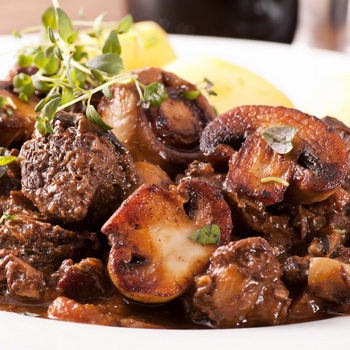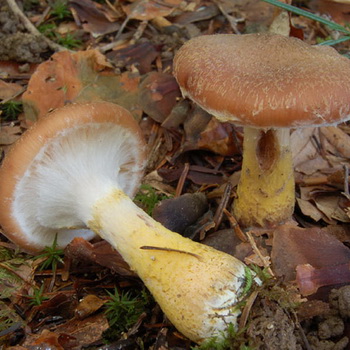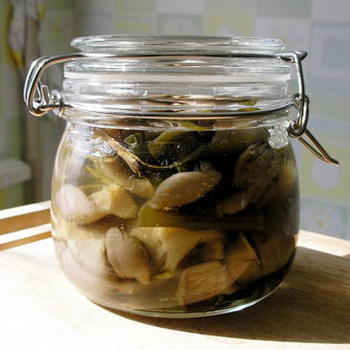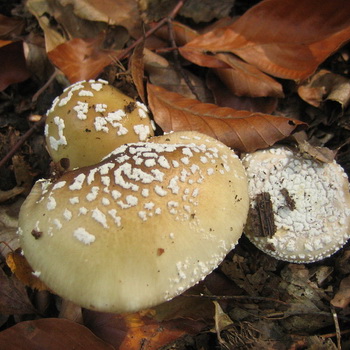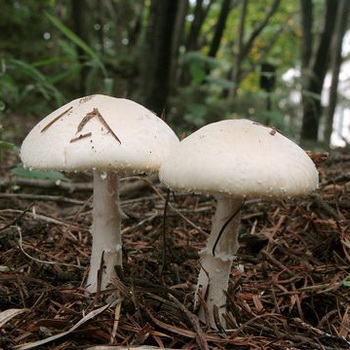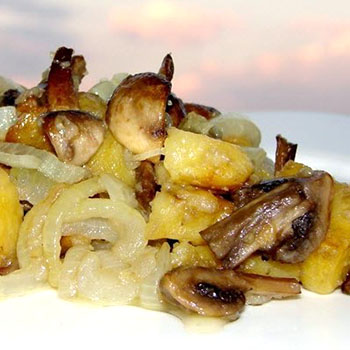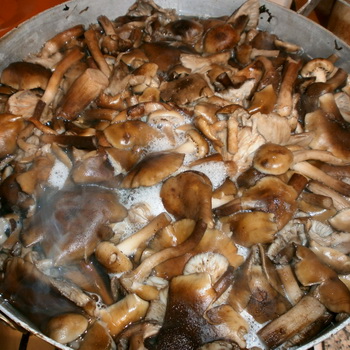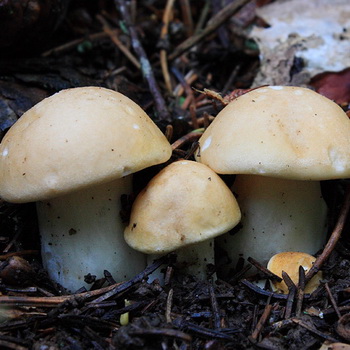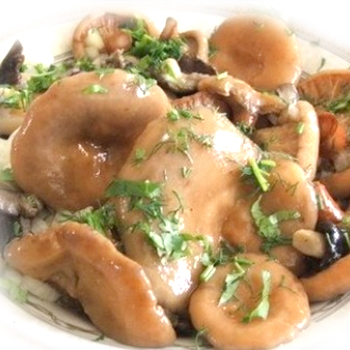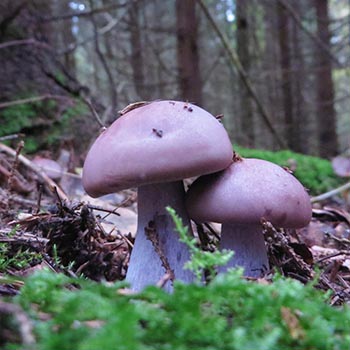Armillaria lutea mushroom: photo and description of the autumn edible mushroom armillaria lutea
 Mycologists all over the world consider mushrooms to be a constant "headache". Experts with enviable regularity, sorting through all types of these fruiting bodies, find 2 and sometimes 3 types of honey agarics with new distinctive features. This is a regularity, because mushrooms are unpretentious and amorphous so much that it is quite difficult to identify spills between species.
Mycologists all over the world consider mushrooms to be a constant "headache". Experts with enviable regularity, sorting through all types of these fruiting bodies, find 2 and sometimes 3 types of honey agarics with new distinctive features. This is a regularity, because mushrooms are unpretentious and amorphous so much that it is quite difficult to identify spills between species.
Description of thick-legged honey fungus (armillaria lutea)
Honey mushroom from Latin means "bracelet", and this is not surprising, because the form of growth of these mushrooms around hemp or trees has a kind of ring. But thick-legged mushrooms grow on a completely different principle.
For example, the thick-legged honey fungus has always been considered an autumn species. However, this was until the experts noticed some distinguishing features from the autumn mushrooms. The first sign is the growing season, and the second is the habitat, that is, where the autumn thick-legged honey fungus grows. It has been observed that this mushroom never grows on the wood of a living tree. The thick-legged fungus can cover large areas of the forest with a yellow blanket, which is immediately noticeable in the autumn forest with its colors.
We bring to your attention a detailed description of Armillaria lutea.
Latin name:Armillaria lutea;
Family: Physalacriaceae;
Genus: The honey fungus is thick-legged;
Hat: in diameter from 2 to 10 cm, at a young age it has a wide conical shape with curled edges. Then it unfolds like a burdock and lowers the edges. The cap color of young specimens ranges from dark brown to light brown or even pink. The edges are sometimes white, then turn yellow and even turn brown. In the center of the cap there are gray or light brown conical scales. Approaching the edge of the cap, the scales become solitary and are in a supine position. In adults, the scales are preserved only closer to the center.
Plates: the mushroom of a thick edible has very frequent plates that descend on the leg. Young mushrooms have white plates; in the process of growth they acquire a brownish tint.
Pulp: has a whitish color and a faint cheesy odor with an astringent taste.
Leg: the mushroom has a cylindrical, club-shaped or bulbous stem with a thickened base. The leg has a "skirt" only in young honey agarics, in adult specimens only the remains of the bedspread are visible. The ring itself made of the film is fibrous, white, sometimes there are brown scales along the edge.
A thick-legged honey fungus, a photo of which can be seen below, is considered a saprophyte:


It loves to grow on rotting foliage or decaying stumps. Less commonly, this type of fungus parasitizes on dying trees.
Where fat-legged mushrooms grow
The fat-legged honey agaric begins its growth in August. The collection time lasts on average until mid-November. It grows on rotten trees, right on the ground, sometimes it can be found on a litter of spruce needles. Never infects living and healthy trees. Although it grows in large groups, it does not gather in bunches, like ordinary autumn mushrooms.
Mushroom pickers note that mushrooms grow best in temperate climates. Then the size of the families of this species can impress even experienced lovers of "quiet hunting". In addition to the fact that the thick-legged honey agaric is very fertile, it pleasantly surprises with its constancy. If you find a colony of such fungi, come to this place for several years in a row. You will see: you will harvest more than previous years.
I would like to note that the thickfoot honey fungus does not have false or poisonous relatives that are similar in appearance. Even knowledgeable mushroom pickers very often confuse them with autumn mushrooms and consider them to be one species. These mushrooms are almost continuous on the surface of the forest floor.The peak of data collection of fruiting bodies occurs in October and early November, which distinguishes them from the usual autumn mushrooms, which are collected in September.
For culinary specialists, tolstopod honey mushrooms are considered one of the most delicious mushrooms. They even adapted to grow them not only at home, but also on an industrial scale. Note that these mushrooms lend themselves to the same pretreatment processes as the autumn mushrooms. A wide variety of dishes are prepared from them: soups, julienne, roast, salads. They are pickled, salted, dried, frozen and even fermented.
Now, after finding out the description and looking at the photo of the thickleg mushroom, you can safely head into the forest and collect this amazingly tasty and healthy mushroom.

